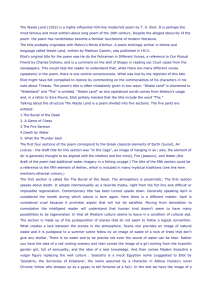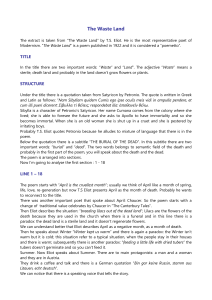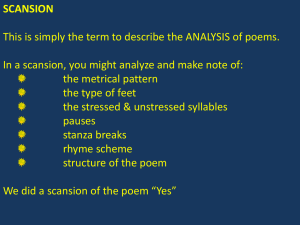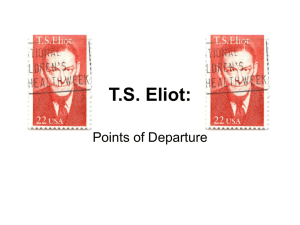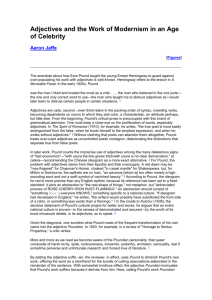Log Sep 3 – Jae Hyun Kim Notes from class 1) What makes a good
advertisement
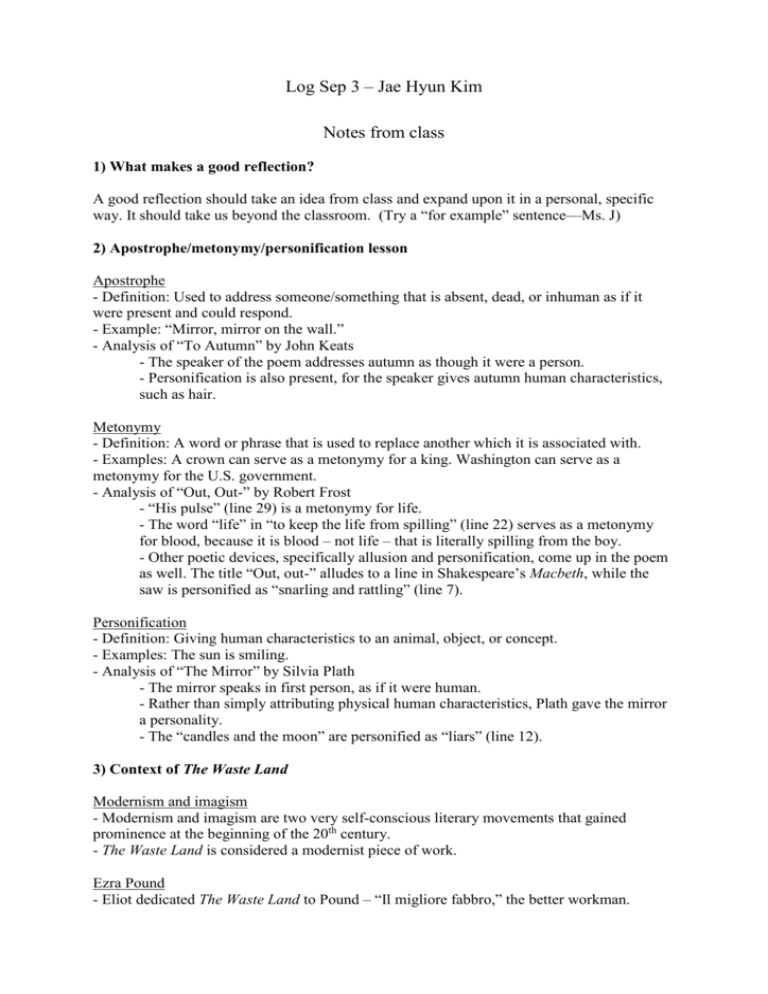
Log Sep 3 – Jae Hyun Kim Notes from class 1) What makes a good reflection? A good reflection should take an idea from class and expand upon it in a personal, specific way. It should take us beyond the classroom. (Try a “for example” sentence—Ms. J) 2) Apostrophe/metonymy/personification lesson Apostrophe - Definition: Used to address someone/something that is absent, dead, or inhuman as if it were present and could respond. - Example: “Mirror, mirror on the wall.” - Analysis of “To Autumn” by John Keats - The speaker of the poem addresses autumn as though it were a person. - Personification is also present, for the speaker gives autumn human characteristics, such as hair. Metonymy - Definition: A word or phrase that is used to replace another which it is associated with. - Examples: A crown can serve as a metonymy for a king. Washington can serve as a metonymy for the U.S. government. - Analysis of “Out, Out-” by Robert Frost - “His pulse” (line 29) is a metonymy for life. - The word “life” in “to keep the life from spilling” (line 22) serves as a metonymy for blood, because it is blood – not life – that is literally spilling from the boy. - Other poetic devices, specifically allusion and personification, come up in the poem as well. The title “Out, out-” alludes to a line in Shakespeare’s Macbeth, while the saw is personified as “snarling and rattling” (line 7). Personification - Definition: Giving human characteristics to an animal, object, or concept. - Examples: The sun is smiling. - Analysis of “The Mirror” by Silvia Plath - The mirror speaks in first person, as if it were human. - Rather than simply attributing physical human characteristics, Plath gave the mirror a personality. - The “candles and the moon” are personified as “liars” (line 12). 3) Context of The Waste Land Modernism and imagism - Modernism and imagism are two very self-conscious literary movements that gained prominence at the beginning of the 20th century. - The Waste Land is considered a modernist piece of work. Ezra Pound - Eliot dedicated The Waste Land to Pound – “Il migliore fabbro,” the better workman. - Pound helped Eliot edit his poem and reduced it to 1/3 its original length. - Pound was a leading figure in the Modernist movement. Responses to The Waste Land - Because The Waste Land was avant-garde, it was initially met with a lot of criticism. People criticized it as being horrific and nonsensical. - Critics: Critics claimed The Waste Land represented the crisis of post-war western culture and that is was the “disillusionment of a generation.” - Eliot: Eliot responded to the critics’ analysis by claiming it was “their illusion of being disillusioned.” He himself said The Waste Land was “just a piece of rhythmical grumbling.” - Ezra Pound: Pound said the poem was “the justification of Modernism.” T.S. Eliot’s personal background - Eliot was in the middle of a very unhappy marriage when he wrote The Waste Land. - He was still in the process of recovering mentally and emotionally. 4) Literary theories - Question: Why should we, or why is it important, that we read and study The Waste Land if Eliot insists it’s “just a piece of rhythmical grumbling?” - Question leads us to consider reader response theory vs. authorial intent. - Reader response theory: The text is what the reader makes it to be. - Authorial intent: The text is what the author meant it to be. Reflection After class ended, the idea of reader response theory versus authorial intent continued to linger on my mind. I realized that unconsciously, I’ve been studying literature using a combination of the two theories: I first analyzed the author’s intent, and then formed my own interpretation of the text. Because I was so accustomed to working with both theories, I never took the time to consider each in isolation. After some thought, I realized that there are limitations to both. I think the main weakness of the authorial intent theory is that it limits one’s interaction with the text. Though it’s absolutely possible to interact with the text even when interpreting it in light of the author’s intentions, I think the thoughts and emotions one brings to a personal interpretation make for a much “fuller” interaction – a more exciting journey. Without personal interpretation, reading may be rendered to simply extracting meaning from words, making for a rather uniform, dull experience. On the other hand, I believe there are weaknesses associated with reader response theory, as well. If one were to interpret text however he or she likes, without regard to author intention (which is like the context or base of the text), he or she may not understand the text’s full meaning. I’ve experienced this first-hand recently while reading the poem “How Many Paltry Foolish Painted Things” by Michael Drayton. After reading the poem, I thought it was about art and materialism, but I later found out that Drayton was writing about a loved one. Upon realizing Drayton’s intention, I reread the poem and was able to pick up subtleties that I hadn’t noticed before. Thus, I believe reader response theory and authorial intent, when considered together, make for the fullest interpretation of the text. Hopefully, I can put this realization to practice while studying The Waste Land by remaining conscious of Eliot’s “rhythmical grumbling” while forming my own exciting interpretations.




